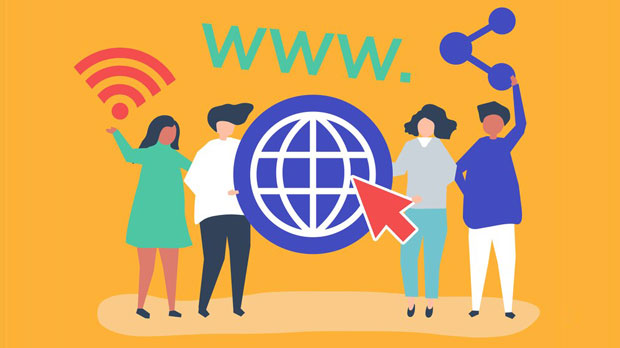Web scraping is an essential technique for extracting large amounts of data from websites for various purposes, such as market research, data analysis, and SEO optimization. The key to effective scraping lies in how requests are made to access and retrieve data. This is where the choice of IP addresses plays a critical role. Two major types of IP addresses are typically used in web scraping: residential IP addresses and data center IPs. These two types of IP addresses differ significantly in terms of their origin, trustworthiness, and effectiveness when used for web scraping tasks. Understanding these differences is crucial for anyone involved in scraping as they can affect the reliability, speed, and success of the data collection process. Below, we will explore the key differences between residential IP addresses and data center IPs in web scraping and how these differences influence the outcome of scraping projects.1. What is a Residential IP Address?A residential IP address is associated with a physical location and is provided by Internet Service Providers (ISPs) to individual users. These IP addresses are typically linked to home networks or mobile devices and are often perceived as more legitimate and trustworthy by websites. When a user accesses the internet from their home, the IP address that they use is a residential IP address. These IPs are allocated to real-world devices, which means they are not typically associated with any commercial or automated activity.In web scraping, residential IPs are considered “real” IPs because they are often indistinguishable from the IPs used by regular internet users. This makes them less likely to be blocked or flagged by websites during data extraction. Residential IP addresses are highly valuable for bypassing anti-scraping measures like CAPTCHA, IP blocking, and rate-limiting since websites generally trust residential IPs more than data center IPs.2. What is a Data Center IP Address?A data center IP address, on the other hand, is typically provided by data centers and is used by servers rather than individuals. These IPs are usually part of a larger pool allocated to commercial operations and are often associated with high-traffic activities, such as web hosting or cloud services. Unlike residential IP addresses, data center IPs are not tied to real users, making them more likely to be flagged as suspicious or linked to automated bot activity.Web scraping operations that use data center IP addresses often face challenges because websites can easily identify these IPs as coming from data centers. Since data centers are known to host large-scale scraping operations, websites often implement sophisticated measures to detect and block these IPs. This can lead to scraping failures, CAPTCHA challenges, and IP bans, which can disrupt the data collection process.3. Key Differences Between Residential IPs and Data Center IPs3.1 Trustworthiness and LegitimacyOne of the primary differences between residential IPs and data center IPs is the perception of trustworthiness. Residential IPs are associated with real users and are generally perceived as legitimate traffic by websites. This makes them less likely to be blocked or flagged as suspicious. Data center IPs, however, are often associated with high-volume automated requests, making them more prone to being identified as bots by web servers.3.2 Risk of Detection and BlockingDue to their association with real users, residential IPs are far less likely to trigger detection mechanisms like IP blocking, CAPTCHA, or rate-limiting. Websites trust residential IPs because they represent human traffic. In contrast, data center IPs are easily detected because they come from large-scale commercial networks rather than individual users. As a result, scraping operations that rely on data center IPs are more likely to face detection and blocking.3.3 Speed and CostIn terms of speed, data center IPs tend to perform better due to the high-speed infrastructure of data centers. These IPs can handle large volumes of requests quickly, which is ideal for scraping projects that require high efficiency. However, residential IPs often face slower speeds due to the nature of home internet connections, which may not be as optimized for high-traffic scraping operations. On the cost side, residential IPs are generally more expensive than data center IPs. Residential IP providers typically offer pricing models based on usage and demand, and as a result, scraping with residential IPs tends to cost more. Data center IPs, on the other hand, are less expensive because they come from large pools of IPs managed by data centers, making them more accessible for budget-conscious scraping operations.3.4 Use Cases and ApplicationsThe use cases for residential IP addresses are ideal for tasks that require anonymity and high levels of trust, such as e-commerce scraping, social media scraping, or gathering data from websites with strong anti-scraping defenses. Residential IPs are particularly useful for scraping websites that employ advanced bot-detection technologies, as they blend in with normal user traffic.In contrast, data center IPs are better suited for large-scale, less sensitive scraping tasks where speed and efficiency are paramount. They are commonly used in scraping projects that require handling a large volume of data quickly, such as price monitoring, SEO analysis, and market research, where the risk of IP detection is lower or can be mitigated by using rotating proxies.4. Pros and Cons of Residential IPs4.1 Advantages- Higher Trust Level: Residential IPs are associated with real users and are trusted by websites, reducing the likelihood of blocking.- Bypass Anti-Scraping Measures: Residential IPs are more effective at bypassing CAPTCHA, IP blocking, and other anti-scraping technologies.- Improved Success Rates: Using residential IPs leads to higher success rates in scraping as they blend with normal user traffic.4.2 Disadvantages- Higher Costs: Residential IPs are generally more expensive due to the need to rent real user connections.- Slower Speeds: Due to the nature of home networks, residential IPs may experience slower speeds compared to data center IPs.5. Pros and Cons of Data Center IPs5.1 Advantages- Cost-Effective: Data center IPs are typically less expensive compared to residential IPs, making them more accessible for budget-conscious scraping.- High Speed: Data centers offer high-speed connections, making data collection more efficient.5.2 Disadvantages- Higher Risk of Detection: Data center IPs are more likely to be detected and blocked by websites.- Limited Anonymity: These IPs are not associated with real users, which makes them easier to identify as part of automated scraping operations.The choice between residential IP addresses and data center IPs depends on the specific needs of your web scraping project. If anonymity, high success rates, and the ability to bypass anti-scraping technologies are critical, then residential IPs are the better option, despite their higher costs. However, if speed and efficiency are the main priorities and the risk of detection is manageable, then data center IPs can provide a more cost-effective solution.Both types of IP addresses have their advantages and disadvantages, and understanding these differences will allow you to make an informed decision based on the scope, scale, and objectives of your scraping project. Ultimately, choosing the right IP address type can significantly impact the success and efficiency of your data collection efforts.
Sep 11, 2025



































































